The area now known as Castle Kennedy Airfield forms part of Cults Farm about five miles east of Stranraer. It is in an area of relatively low lying ground on the gravel outwash deposited by the glaciers when they retreated up the Firth of Clyde. This flat ground was the ideal basis for an airfield, and was used for the first recorded landing by a fixed wing aircraft in Galloway, in August 1913.
The aircraft involved were a contingent of one Maurice Farman MF7, and five BE 2’s, from 2 Squadron Royal Flying Corps based at Panmure Barracks near Montrose. The aircraft, were on their way to Ireland to take part in Military manoeuvres. While at Castle Kennedy they were fitted with flotation bags to assist them in the event of ditching in the Irish Sea. At the conclusion of the exercise only three of the original six aircraft were able to complete the journey from Castle Kennedy to Montrose, the remainder having suffered from mechanical or navigational problems.
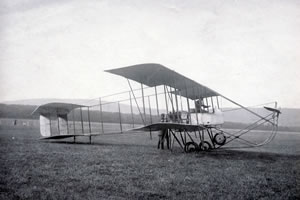
The arrival of the aircraft predictably created much local interest, and schools were closed, and special trains organised to Castle Kennedy station to view the new machines.
During the First World War, and in the intervening period, the airfield was used intermittently for the transport of mail and small goods across the water to Ireland, but generally the area returned to agriculture.
However shortly after the outbreak of hostilities in the Second World War, there was a need to move training establishments away from the south coast of England.
This was not only to allow combat operations, but because it is difficult to train aircrew under fire from marauding enemy planes! While all types of aircrew were required, air gunners needed space for firing weapons, and the quiet coastal water of west Galloway were ideal for creating range areas for this activity.
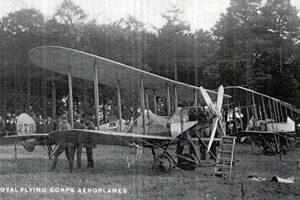
The chosen site for the new gunnery school was at Castle Kennedy, and in mid 1940, a concrete perimeter track was created, and three Callender Hamilton hangars, were built at the West end, with the administration area behind. In June 1941, the leading elements of the Central Gunnery School from Warmwell in Dorset arrived at West Freugh to start the No. 3 Air Gunnery School at Castle Kennedy. By the end of the month the school was complete with a compliment of Blenheim, Hampden and Wellington aircraft. Defiant aircraft and Lysanders were used for target towing. The role was to train and revise both new and experienced crews in the use of their turrets, first on the ground in classrooms and simulators, and then in the air against drogues towed behind aircraft.
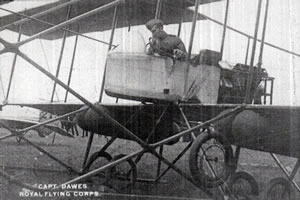
During a very wet autumn in that year, the ground became waterlogged, and flying operations had to be transferred to West Freugh, with Castle Kennedy used only for accommodation. In December of 1941 the airfield was closed, and two concrete runways, one more Callender Hamilton Hangar, and nine blister hangars were built. Construction took only four months, and the airfield reopened in April with the Air Gunnery School equipped with Blackburn Bothas, and target towing Fairey Battles. By August there were a total of seventy-three aircraft based on the airfield. In the same month the airfield was visited by Marshall of the Royal Air Force, Lord Trenchard, who arrived in time to witness a collision between a Botha, and a Battle. Several serious casualties occurred.
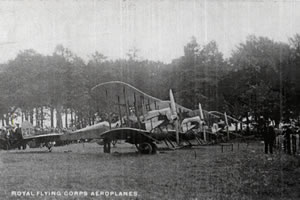
In December 1942, the Air Gunnery School was moved to North Wales, and replaced by 2 Torpedo Training School, responsible for training Coastal Command crews in the Firth of Clyde. The aircraft used wereBristol Beaufighters adopted for torpedo operations. Several crashed including one, which narrowly missed Lochinch Castle about 1 mile north of the airfield. The torpedo school moved to Turnberry after a short spell, and were replaced by 3 Air Gunnery School returning from Wales, now equipped with Ansons for gunnery, and Martinets for target towing.
The gunnery school continued at Castle Kennedy for the next two years, and records show that in this time aircrews from France, Turkey, Belgium, Iraq, Iran, Norway, Sweden and China were trained over and above the normal Commonwealth nations.
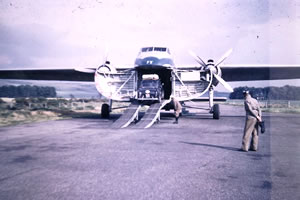
As the war in Europe was drawing to a close, the requirement for aircrews reduced, and in June 1945, 3 Air Gunnery School disbanded. The airfield was then taken over by 57 Maintenance unit based in Loch Ryan, and was used as a sub depot for the storage of aircraft. Wellingtons and Mosquito’s were stored until modified for resale or scrapped. The airfield finally closed in November 1946, and lay empty until 1955, when Silver City Airways used it for a short time for the transport of cars to Ireland in Bristol 170 freighters, and Dakotas. This service was expanded to include Isle of Man for a short time until the service was terminated in 1957.

The airfield has since been used occasionally by small aircraft, and as an exercise base for military helicopters. A kart club operated for several years at the south end of the airfield, and it was as a member of this club, that David Coulthard started his racing career. After a period of disuse, the Kart club has restarted, and is now thriving.
The future of the airfield is not known. It is an ideal place for general aviation en route further up the west coast of Scotland, or crossing to Ireland. At present it is unlicensed with 600 metres repaired on runway 26/08, but the remainder of the runway could easily be reused.
Apart from the area used by the kart club, there is approximately 700 metres that could be developed on runway 33/15.







